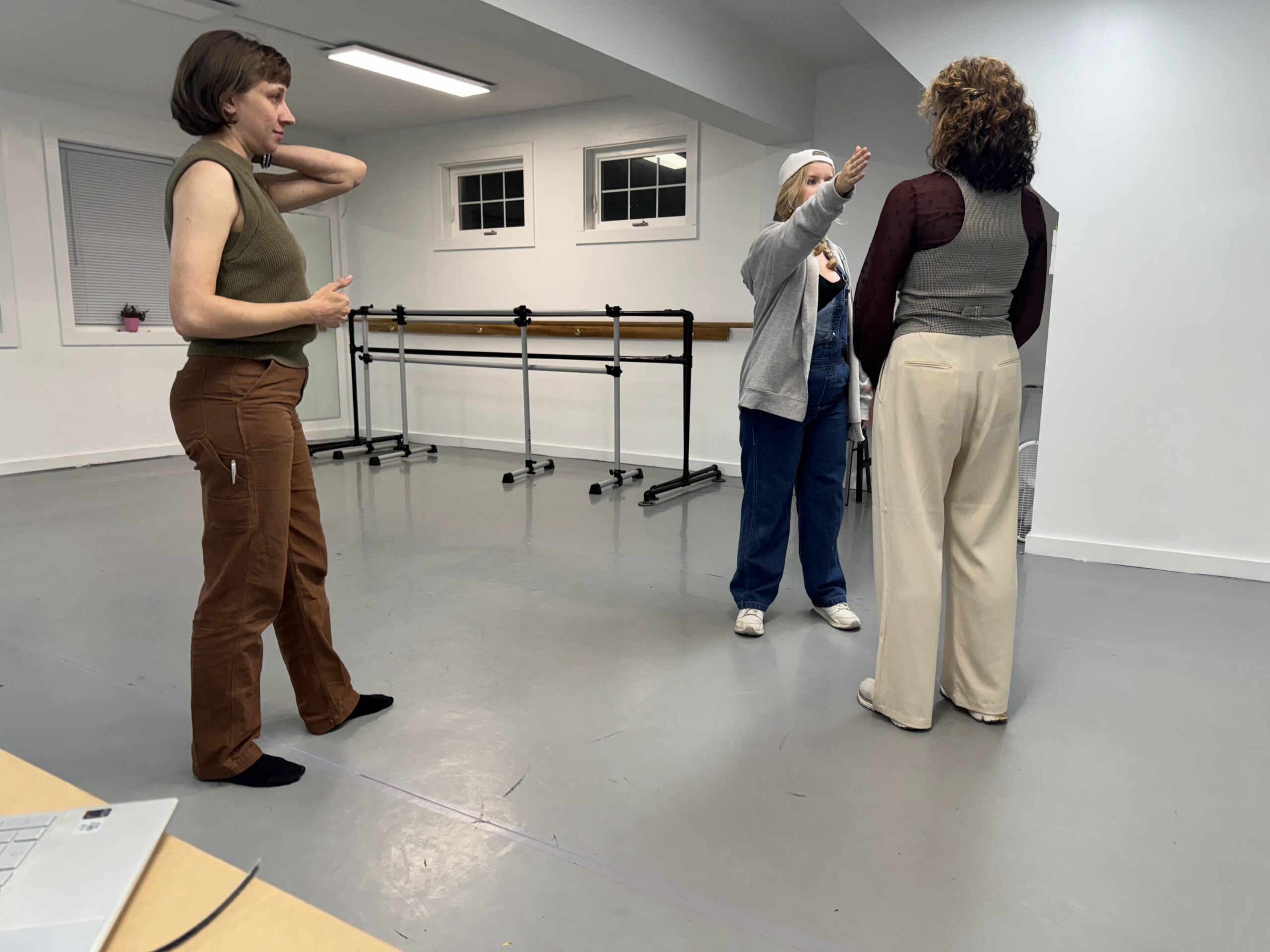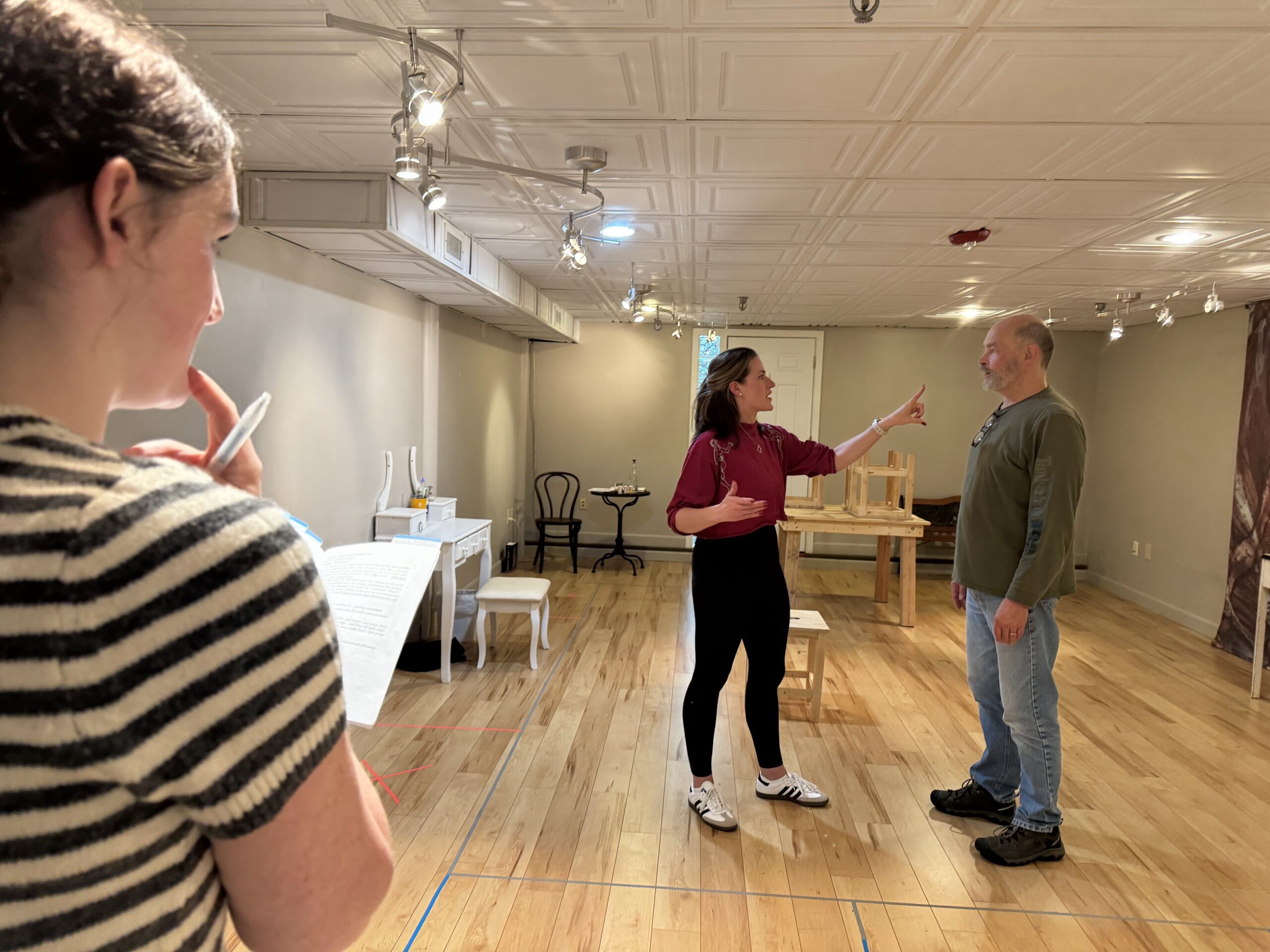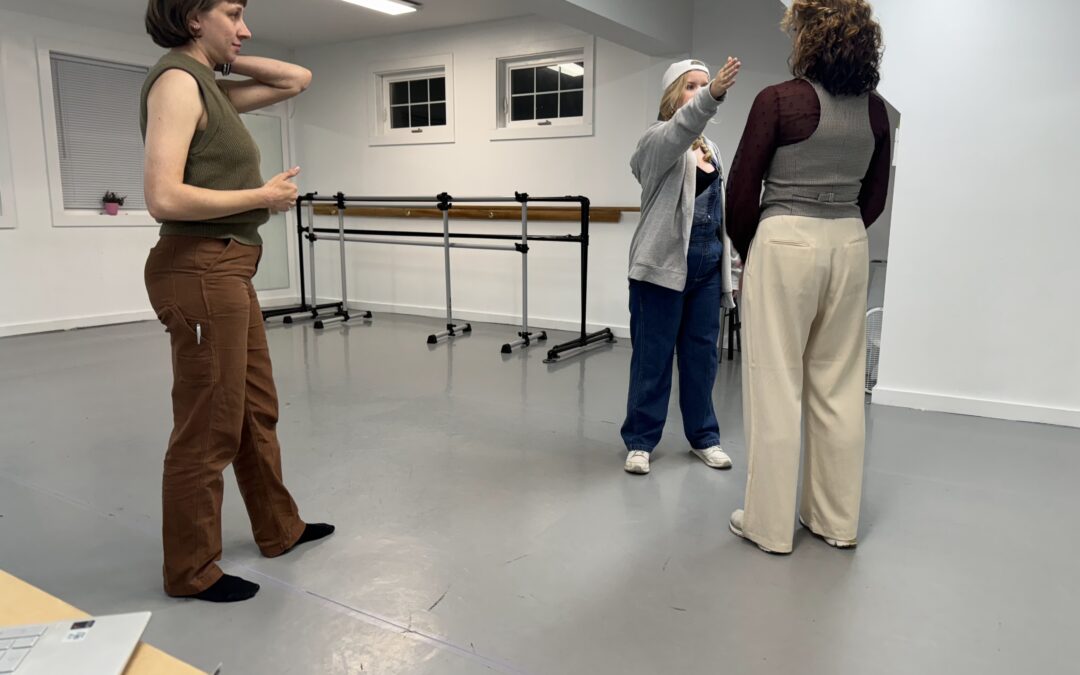#TKapowConversation #Season 17
Since returning to in-person rehearsal rooms and performance spaces after the start of the COVID-19 pandemic, safety and well-being took top priority among tKAPOW’s practices. Of course this meant testing, masking and livestreaming whenever possible and necessary, but it also meant reconsidering our theatre-making process with our actor’s wellbeing as the top priority. Like all art forms, acting is incredibly vulnerable. It requires one to put their body into various states of physicality and emotion, and even though we know cognitively that the circumstances are fictional, our bodies cannot always tell the difference. This is the reason that Intimacy and Combat choreographers have become essential members of well-rounded, safe theatrical teams.
Theatre KAPOW has been working with Intimacy and Combat Choreographers consistently since the start of our fifteenth season. At the most basic level, Intimacy and Stage Combat Choreographers are responsible for creating the sequences of movement that make up moments of physically intimate contact between two or more characters, such as stage kisses, slaps or even weapon work. It’s a means with which to choreograph a character’s most raw and impulsive actions while keeping them organic and appearing completely un-choreographed.

“A stage combat choreographer looks at the violence of a piece. So if there is either scripted violence, or a director has an idea of violence that might occur based on the acceleration of the scene, we are brought in to look at the background of the characters and dramaturgically assess what kind of choreography would fit on the bodies of two people engaged in a violent encounter, or the bodies of two characters who are engaged in a violent encounter and where those intersections come together,” shared Kyrie Ellison-Keller, who has worked with tKAPOW as both an intimacy and combat choreographer. Kyrie has choreographed two instances of violence for our September production, LIFE SUCKS. “My favorite Stage Combat Company to study with, Neutral Chaos Combat, they call us all Violent Dance Magicians. What we’re doing is we’re choreographing violence, but violence on stage is inherently not real, so it’s choreographed illusion. And if it’s done well, it looks violent.”
Samantha Griffin, Intimacy Choreographer for LIFE SUCKS., grew up as a dancer and finds the two artforms very comparable. “My dance background informs a lot of the ways that I choreograph without using sexualized language,” she says. “With dance, we’re very specific, like: on this exact count you move your hand this way, and on the next count you step here. That’s how I approach choreographing intimacy. I give people counts. I ask: how many steps will it take you to close this gap between you? I give actors a certain amount of seconds to hold a kiss or an embrace, and use the language of music and dance like ‘staccato’ or ‘languid.”’

That being said, creating choreography is not the only purpose of having an intimacy professional in the space. “Intimacy choreography is a practice that’s been developing over generations. In simple terms, yes, it’s the practice of consent and boundaries for actors. We are people who can come into the space and arm actors and professionals with language and tools to create a consent-based environment that will safely allow us to step into characters and emotions that are not our own,” says Griffin. “A lot of my practice is working with actors playing emotionally-turbulent roles to figure out how they can connect and disconnect from them, so that they do not carry it with them into their personal lives.” Ellison-Keller adds: “There’s so much about stage combat and intimacy that looks really easy, because we do our jobs really really well. The people who come into those spaces to choreograph instances of heightened emotional turmoil have sensitivity training, have trauma-informed training, have choreographic training, and have experience beyond just looking at how to make something look violent or intense.”
A shared sentiment between the two was that their work goes beyond simply creating movement sequences. Sam says she thinks of herself as “an advocate for the actors,” and Kyrie says that “for a lot of people we’re check boxes, but we empower creators and creatives to tell risky narratives in a way that doesn’t end their careers.” Kyrie encourages any theatre professionals or companies who are interested in the work but are unsure where to start to simply ask questions. Both Kyrie Ellison-Keller and Sam Griffin remarked that the two mediums are commonly misunderstood and shied away from, but that the work is essential to the sustainable creation of bold theatre.
Join us for the first production of our 17th Season, LIFE SUCKS. by Aaron Posner (sort of adapted from Uncle Vanya by Anton Chekov) at the BNH Stage in Concord, NH on September 20, 21, and 22! Tickets are available here.
Thanks to Samantha Griffin and Kyrie Ellison-Keller for providing their insight and for the incredible work they do!

